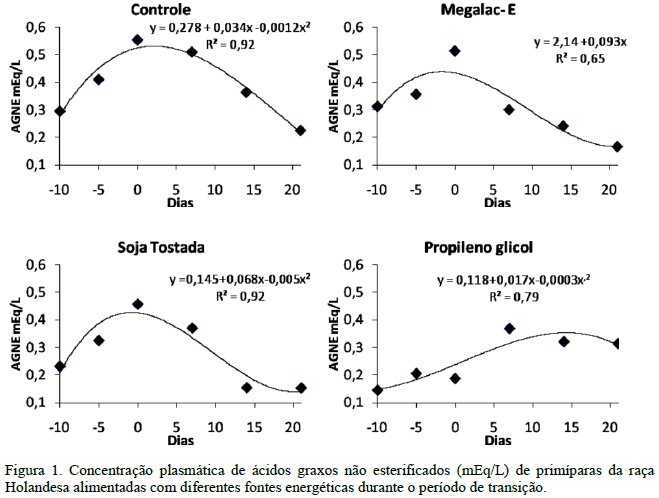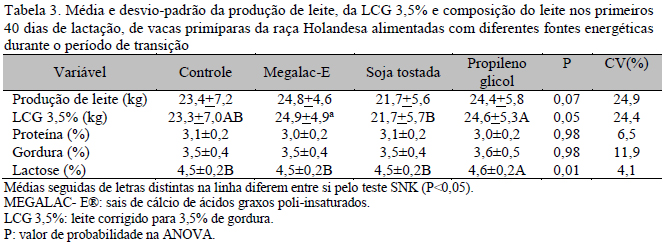The purpose of this trial was to evaluate the effect of different energy sources added to the diet over milk production and composition, disease incidence during postpartum period and its relationship to NEFA concentrations during the transition period. Fifty primiparous Holstein dairy cows were used from 28 days before the expected calving date until 21 days postpartum. Cows were randomly distributed in four groups, being: control, Megalac- E®, toasted soybean (TS) and propylene glycol (PG). Clinical evaluations were performed during all experimental days. Blood samples were collected in pre and postpartum periods, before the first feeding of sampling day in order to determine NEFA prolife. Megalac- E® and propylene glicol groups showed greater milk production corrected to 3.5% fat compared to group toasted soybean (P=0.05). In control groups, Megalac-E® and toasted soybean values of NEFA increased until delivery and then decreased. This decrease was less pronounced in the control group that showed a quadratic regression equation associated with higher incidence of postpartum disorders. The Megalac-E® group showed a cubic model, the toasted soybean hyperbolic and propylene glycol quadratic equations.
dairy cow; fat supplementation; glyconeogenic additive; peripartum





